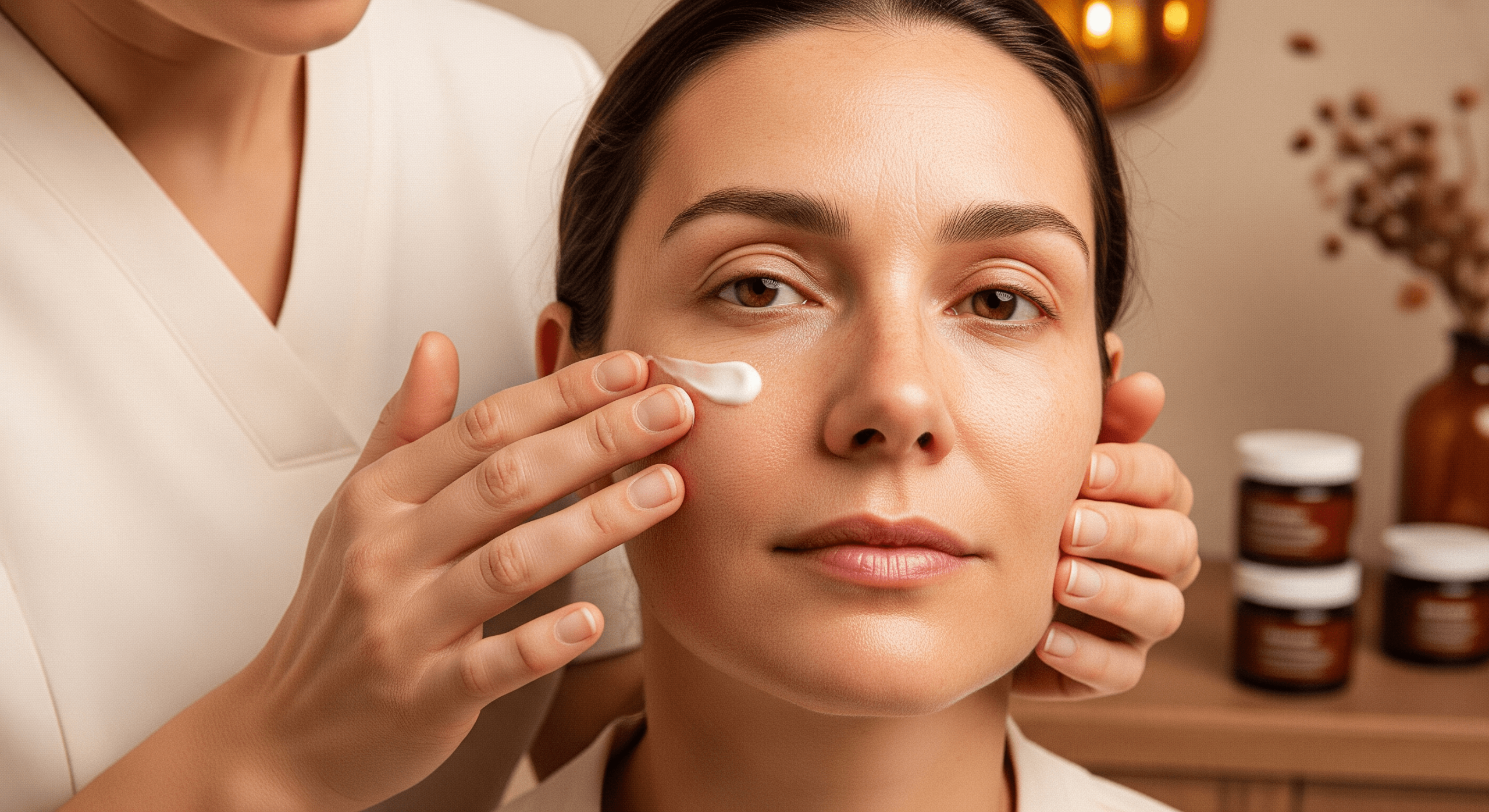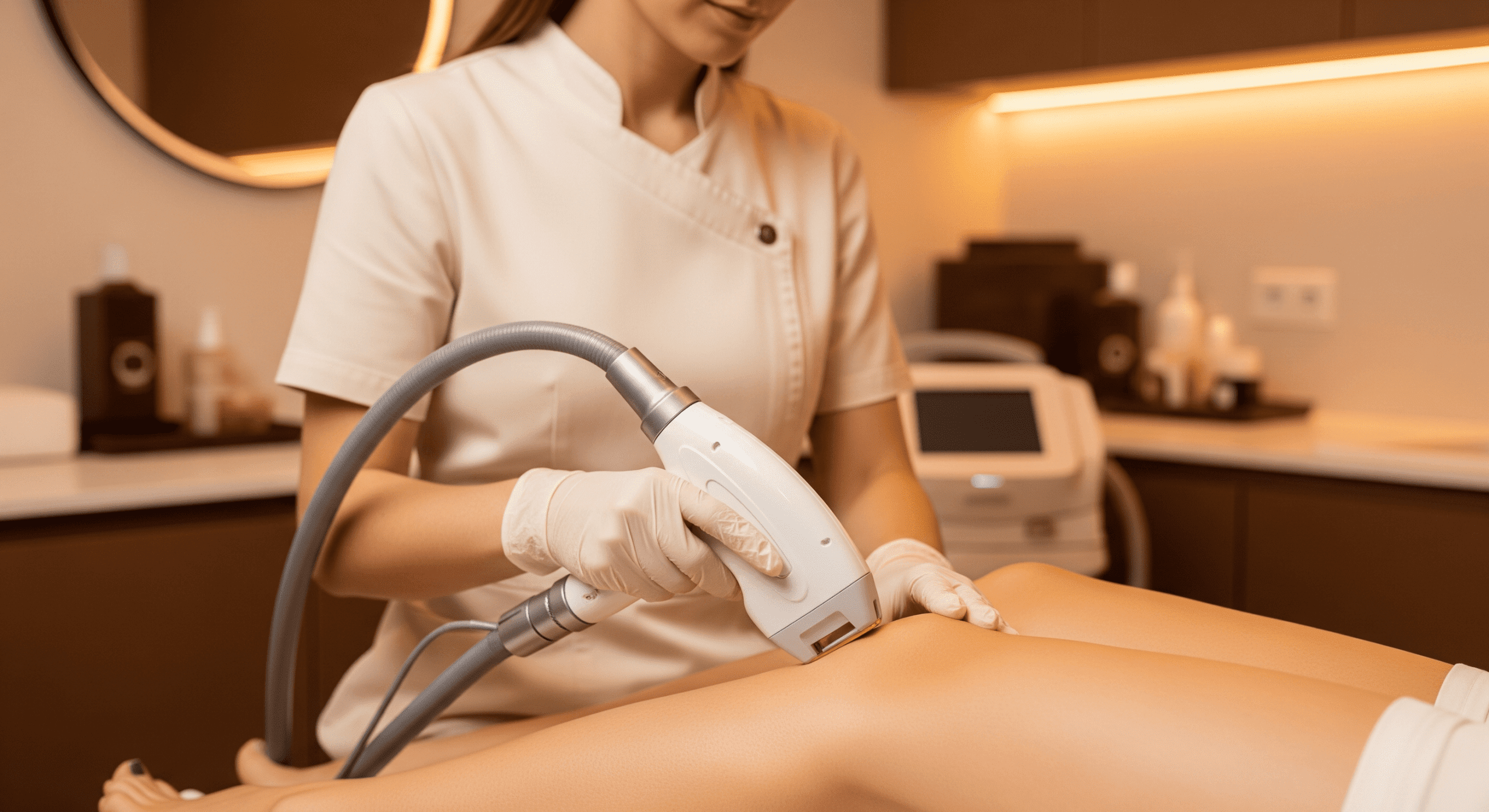Exfoliation is one of the most praised skincare steps. It promises smoother skin, brighter tone, and fewer breakouts. But like most things in skincare, more isn’t always better. Over-exfoliating can backfire—stripping your skin barrier, causing irritation, and triggering breakouts or sensitivity.
Understanding how to recognize and repair over-exfoliated skin can make the difference between glowing results and ongoing damage. Let’s break down the key signs, long-term risks, and what to do if your skin needs a reset.
Jump to:
TLDR – Quick Guide
- Exfoliating too often or with harsh products can lead to barrier damage, sensitivity, and breakouts.
- Signs include redness, stinging, dryness, flaking, and more breakouts.
- Over-exfoliated skin is more prone to inflammation, hyperpigmentation, and premature aging.
- Fix it with a simplified, nourishing routine that emphasizes hydration and repair.
- Professional treatments like LED therapy, hydrafacials, and barrier-repair facials can accelerate healing.
Detailed Breakdown
1. What Happens When You Over-Exfoliate?
Exfoliating removes dead skin cells, but too much can strip the protective barrier and expose fresh skin to environmental stressors. This increases transepidermal water loss (TEWL), reduces the skin’s ability to retain moisture, and causes inflammation.
Common culprits include using multiple exfoliating acids (AHAs, BHAs, retinoids) at once, physical scrubs with rough particles, or daily exfoliation without downtime.
2. Signs You’re Over-Exfoliating
- Persistent redness or blotchiness
- Tightness or stinging when applying products
- Flaky patches or peeling skin
- Breakouts or a worsening of acne
- Shiny but not oily texture—a sign of a compromised barrier
- Heightened sensitivity to sunlight or products you used to tolerate
3. The Risks of Long-Term Over-Exfoliation
Over time, exfoliating too aggressively can weaken the skin’s natural defenses and lead to:
- Chronic inflammation
- Increased pigmentation or dark spots
- Premature signs of aging like fine lines and sagging
- Worsened acne due to skin disruption and increased oil production
4. How to Repair Over-Exfoliated Skin
Step 1: Stop All Exfoliants
Cease using scrubs, peels, acids, and retinoids for at least 7–10 days. Give your skin time to recover without interference.
Step 2: Use a Gentle Cleanser
Opt for a non-stripping, sulfate-free cleanser that maintains the skin’s pH and doesn’t add further stress.
Step 3: Focus on Barrier Repair
Look for moisturizers with ceramides, niacinamide, and fatty acids. Products with panthenol or centella asiatica can calm inflammation.
Step 4: Hydrate Generously
Use hydrating serums with hyaluronic acid or polyglutamic acid to restore moisture levels.
Step 5: Protect with SPF
Your skin is more vulnerable to UV damage post-exfoliation. Daily broad-spectrum sunscreen is non-negotiable.
5. Professional Help for Recovery
Medical spas like Skin Care Institute offer advanced recovery treatments designed for barrier repair:
- LED Light Therapy to reduce inflammation and support healing
- Hydrafacial® with gentle serums to restore hydration without aggravation
- Barrier Repair Facials formulated with calming, lipid-rich ingredients
- Custom Skincare Consultations to evaluate your skin and design a restorative routine
Key Takeaways
- Over-exfoliating skin is a common skincare mistake that can damage your barrier and accelerate aging.
- Recognizing the signs early and taking a break from actives is key to recovery.
- A healing skincare regimen focused on hydration, nourishment, and protection is essential.
- Professional treatments can speed up recovery and prevent long-term issues.
FAQs
How often should I exfoliate?
For most skin types, 1–3 times a week is enough. Sensitive skin may only need exfoliation once weekly or even less frequently.
Can over-exfoliating cause acne?
Yes. A disrupted barrier can trigger inflammation, increase oil production, and create the perfect conditions for breakouts.
What ingredients should I avoid while healing my skin?
Avoid AHAs, BHAs, retinoids, alcohol-based toners, and essential oils. Focus on gentle, barrier-supporting ingredients instead.
How long does it take to heal over-exfoliated skin?
Mild cases may recover in a few days, but more severe damage can take 2–4 weeks. Consistency in gentle care is key.
Is it okay to use a moisturizer with exfoliating acids while healing?
No. Avoid any multitasking products with active exfoliants until your skin is fully repaired.


